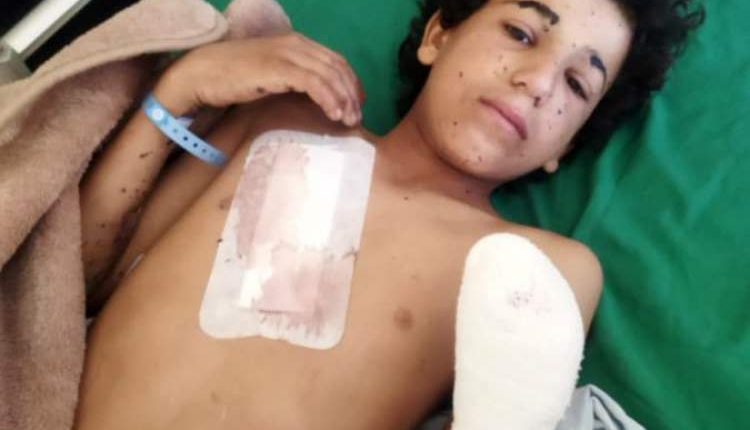Citizen Killed in Hodeidah, Another Injured in Marib by Explosion of US-Saudi Remnants
A citizen was killed on Friday by a projectile explosion from the remnants of the US-Saudi aggression in Hodeidah governorate Governorate.
The Executive Center for Mine Action also confirmed that a child was Injured by a projectile explosion from the remnants of the US-Saudi aggression in Marib.
Saudi Arabia, backed by the United States and regional allies, launched the war on Yemen in March 2015, with the claim of bringing the government of former Yemeni president Abd Rabbuh Mansour Hadi back to power.
The war has left hundreds of thousands of Yemenis dead, and displaced millions more. It has also destroyed Yemen’s infrastructure and spread famine and infectious diseases there.
Many areas in Yemen’s governorates have been bombarded by US-Saudi aggression with cluster bombs, while many of those internationally prohibited bombs are still scattered among farms and roads, and their victims are in the dozens.
The victims of cluster bombs have reached more than 25,000 civilians since the beginning of the US-Saudi aggression on Yemen.
The landmines and other remnants of the forces of aggression that they planted during their occupation, still pose a threat to the residents of many areas of the districts, especially farms and roads.
In official statistics, 2,500 cluster, destructive, phosphorous and piercing bomb raids targeted nine governorates in the republic, foremost among which were US bombs like the CBU-87, British bombs like the BL755 and the Brazilian ASTROS II bombs.
Each of these weapons has its own properties and high impacts on humans and environment, which remain life threatening for a long period of time. This shows the scale of the disaster that befell Yemen as a result of these US, British and other weapons.
The US-Saudi aggression refuses to enter equipment and devices to detect explosives in light of the silence of the United Nations, which bears the greatest responsibility for the continued casualties due to the remnants of the aggression, including mines and cluster bombs.
The Mine Center’s field work is concentrated in dangerous areas and densely populated directorates. However, the UN’s curtailment of its support programs and the coalition’s prevention of the introduction of detectors raises the specter of death that threatens the lives of women and children.

